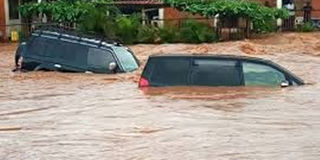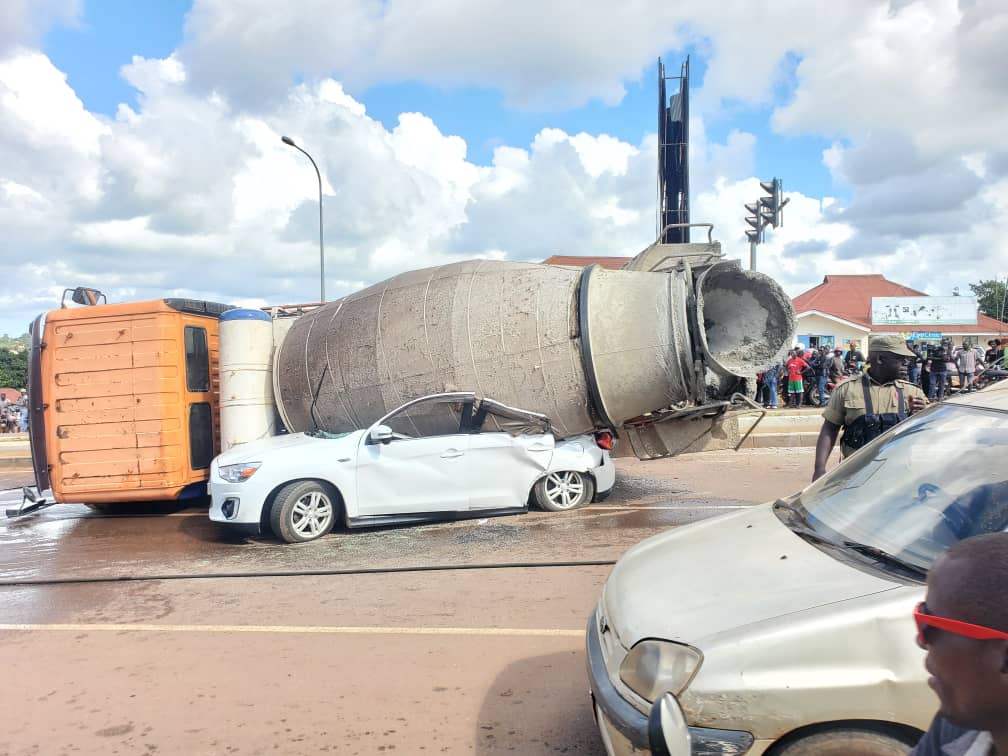Address Kampala flooding problem

What you need to know:
Kampala’s drainage systems faces several challenges such as encroachment on the drainage routes, shortage of funds, poor maintenance and vandalism
Police on Friday recovered two bodies in the Nakivubo Channel at Clock Tower, Kampala, after a downpour.
Kampala Metropolitan Police spokesperson Patrick Onyango said the two bodies were recovered at the same spot.
This is just the latest of what has become the normal whenever the rainy season starts.
Reports of people dying in collapsed buildings and drowning in storm water are expected usually between September to November and March to May.
Barely four months ago, CCTV footage in which a woman was seen slipping into a drainage channel in Kampala and being swept away went viral. She was 56-year-old Cissy Namukasa and she met her death while moving on the streets of Kampala during a downpour.
A walk down the streets of Kampala will reveal a disturbing image: gapping manholes by the roadsides. These are meant to connect the city to a complex drainage network system that comprises eight main watersheds.
These include Nakivubo, Lubigi, Nalukolongo, Kansanga, Mayanja/Kaliddubi, Kinawataka, Nalubaga and Walufumbe.
In her state of flooding in Kampala report to Parliament in June 2019, Minister of State for Kampala Benny Namugwanya explained that the hilly terrain of the city implies that water quickly flows from the catchment areas into primary and secondary channels located at the lowest points. And this running water is what has become a nightmare for city dwellers.
Kampala’s drainage systems faces several challenges such as encroachment on the drainage routes, shortage of funds, poor maintenance and vandalism.
These open drainage channels and manholes on the road edges are a danger to the public and an accident waiting to happen.
Whereas Kampala Capital City Authority (KCCA) says it procured 500 manhole composite covers for the city during the lockdown, more has to be done by both the authorities and the public.
Those in charge of development of the city have to ensure that plans are drawn that meet the needs and specification of the day, and most importantly, the safety of everyone.
They also have to ensure that there is money set aside for maintenance and routine inspection of the drainage channels. Other than the wear and tear on the system, the other damage is man-made. And this is where the public comes in.
The people who vandalise these drainage channels and steal manhole covers are not aliens. They are our friends, relatives and neighbours and we know the danger they are putting the rest of the public in. Together we can protect the next victim from Kampala’s floods.
Police on Friday recovered two bodies in the Nakivubo Channel at Clock Tower, Kampala, after a downpour.
Kampala Metropolitan Police spokesperson Patrick Onyango said the two bodies were recovered at the same spot.
This is just the latest of what has become the normal whenever the rainy season starts.
Reports of people dying in collapsed buildings and drowning in storm water are expected usually between September to November and March to May.
Barely four months ago, CCTV footage in which a woman was seen slipping into a drainage channel in Kampala and being swept away went viral. She was 56-year-old Cissy Namukasa and she met her death while moving on the streets of Kampala during a downpour.
A walk down the streets of Kampala will reveal a disturbing image: gapping manholes by the roadsides. These are meant to connect the city to a complex drainage network system that comprises eight main watersheds.
These include Nakivubo, Lubigi, Nalukolongo, Kansanga, Mayanja/Kaliddubi, Kinawataka, Nalubaga and Walufumbe.
In her state of flooding in Kampala report to Parliament in June 2019, Minister of State for Kampala Benny Namugwanya explained that the hilly terrain of the city implies that water quickly flows from the catchment areas into primary and secondary channels located at the lowest points. And this running water is what has become a nightmare for city dwellers.
Kampala’s drainage systems faces several challenges such as encroachment on the drainage routes, shortage of funds, poor maintenance and vandalism.
These open drainage channels and manholes on the road edges are a danger to the public and an accident waiting to happen.
Whereas Kampala Capital City Authority (KCCA) says it procured 500 manhole composite covers for the city during the lockdown, more has to be done by both the authorities and the public.
Those in charge of development of the city have to ensure that plans are drawn that meet the needs and specification of the day, and most importantly, the safety of everyone.
They also have to ensure that there is money set aside for maintenance and routine inspection of the drainage channels. Other than the wear and tear on the system, the other damage is man-made. And this is where the public comes in.
The people who vandalise these drainage channels and steal manhole covers are not aliens. They are our friends, relatives and neighbours and we know the danger they are putting the rest of the public in. Together we can protect the next victim from Kampala’s floods.




